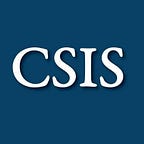NATO: Measuring Results, not Dollars, in Transatlantic Security
By: Jeffrey Rathke
President Trump travels to Europe this week for a NATO summit, and he has one number on his mind: 2% — the target level of 2024 defense spending NATO members have set (as percentage of national GDP), but which only about half are on track to achieve. The Trump administration’s emphasis on burden sharing is justifiable — virtually every observer of the transatlantic relationship agrees that European allies need to shoulder more of the burden for our common security, and every previous U.S. administration has pressed allies to do more. But as with so many other issues (the trade war with Europe being just one example), President Trump fixates excessively on a single measure, distorts its significance, and pursues it in a way that weakens rather than strengthens relationships with our closest friends and allies. Transatlantic security depends not only on spending levels but more deeply on the shared strategic interests and cohesion of the Atlantic community. Pursuing more dollars to the detriment of our political solidarity is a self-defeating bargain.
There is a better way to approach defense burden sharing with Europe that would be more constructive and effective. The Center for Strategic and International Studies has just concluded a research effort assessing the security contributions of all NATO allies and several important NATO partner nations. We reached four major conclusions:
1. The 2% target does not reflect the actual contributions allies make to our security . Some of the strongest contributors to NATO priorities spend below the 2% level. We measured the percentage of each NATO member’s armed forces deployed for NATO and other military operations. Denmark’s contributions to Afghanistan, for example, have consistently ranked in the top quartile of all NATO allies and partners, despite Copenhagen’s spending only 1.2% of its GDP on defense. Germany (1.2% of GDP) also was in the top quartile for most of the 15 years of international troop presence in Afghanistan. By contrast, Greece spends 2.3% of its GDP on defense, but has been in the bottom quartile of troop contributions in Afghanistan. Which does NATO need more of?
2. We need to measure results instead of inputs. The problem with fixating on defense spending levels as Trump does is that it pays no attention to the outputs: ready forces with modern capabilities who participate in NATO operations, exercises, and missions. It is those forces and capabilities that manage crises, provide deterrence, and ultimately increase transatlantic security. The United States and NATO should be using these criteria to assess which allies are pulling their weight and to put meaningful and targeted pressure on underachievers.
3. That data for this approach already exists. The alliance already has much of the data needed to adopt a results-oriented approach, but the information is classified. The information is restricted as much to reduce embarrassment to individual countries as it is to protect vital national security information. The alliance should agree to make public the data and assessments on readiness (usability and sustainability), on deployments, and on which countries are meeting the capability targets assigned to them by NATO. This will enable a substantive, constructive debate about what allies are doing concretely, and empower legislators and the public to hold their own governments to account for doing their share.
4. We need to collect better information about other ways allies contribute to our common security. Some allies spend significant amounts of money on security through channels other than their defense budgets. We evaluated each country’s foreign assistance and development spending that was focused directly on security . The largest contributors as a percentage of GDP were Germany, the United States, Norway, the Netherlands, and Iceland. Money spent from civilian budgets for crisis management, training foreign security forces, and related purposes makes a real contribution to transatlantic security, but there is no standardized data collection. Other contributions are economic but have a security purpose, such as sanctions on Russia and Iran; these economic sacrifices for security goals do not receive the attention they deserve. Measuring the percentage decline in countries’ trade with Russia, for example, the top five sacrifices from 2012–2016 were made by Iceland, Turkey, Sweden, the Netherlands, and Canada. There is no one-to-one correspondence between a dollar spent on defense, a dollar spent on security assistance, and a dollar foregone in trade, but they all contribute to greater security and to ignore these contributions is to neglect an important source of the Atlantic community’s power.
The obsession with defense spending levels distracts from what NATO needs most: a unified strategy toward Russia and other modern threats to transatlantic security, and the military capabilities to carry those strategies out. The alliance should shift its focus toward measuring the things that matter and holding allies to account when they fall short on the basis of their achievements rather than their raw spending levels. We live in an era of growing stresses on U.S.-European relations, raising doubts about the durability of our decades-old structures for transatlantic cooperation. With regard to NATO, the challenge is to channel the friction in transatlantic relations in a productive direction so that it produces a stronger NATO rather than eroding the political cohesion of the Atlantic alliance.
Jeffrey Rathke is a senior fellow and deputy director of the Europe Program at the Center for Strategic and International Studies in Washington, D.C.
Commentary is produced by the Center for Strategic and International Studies (CSIS), a private, tax-exempt institution focusing on international public policy issues. Its research is nonpartisan and nonproprietary. CSIS does not take specific policy positions. Accordingly, all views, positions, and conclusions expressed in this publication should be understood to be solely those of the author(s).
© 2018 by the Center for Strategic and International Studies. All rights reserved.
Originally published at www.csis.org.
